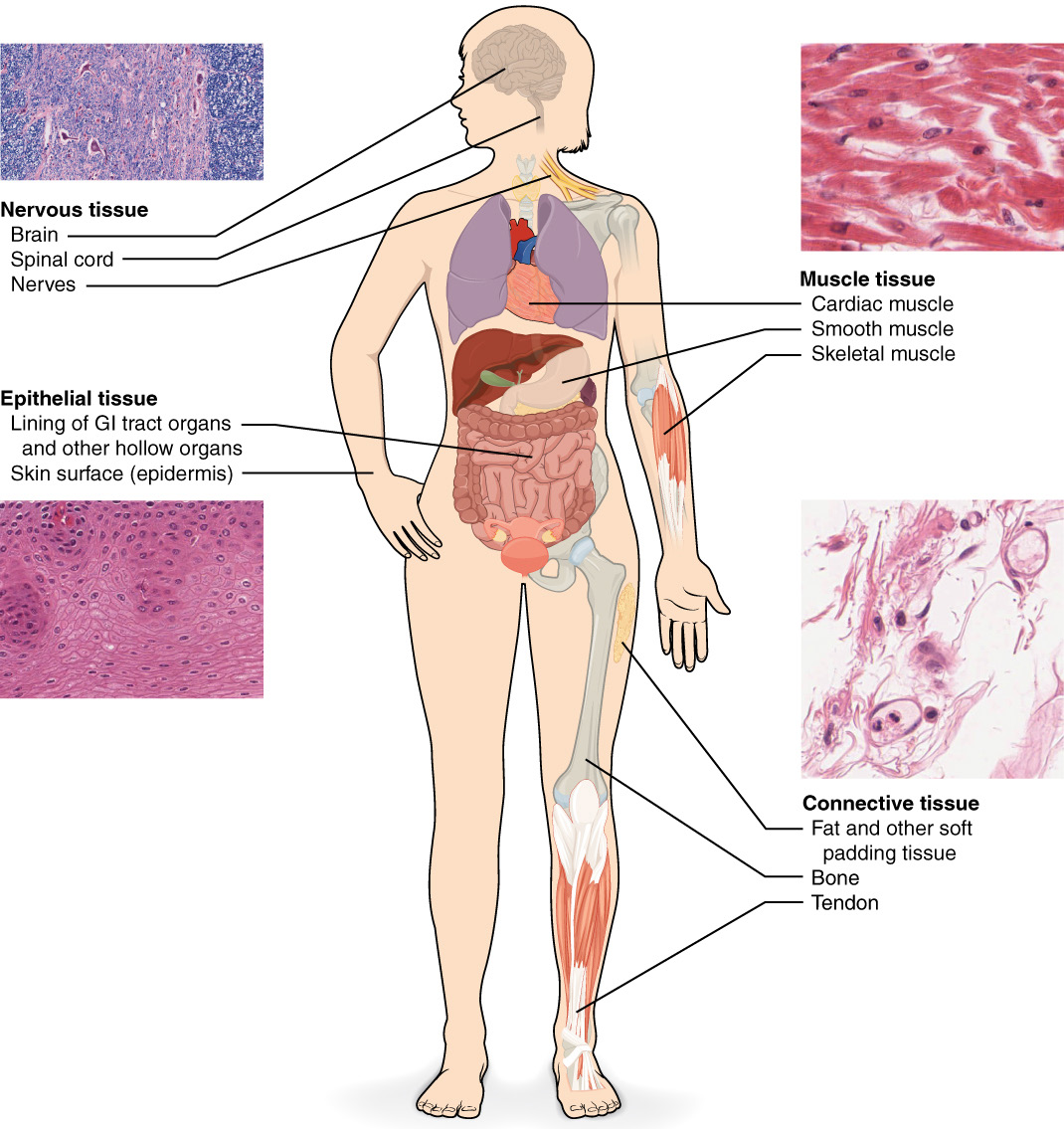The Four Tissue Types
Objective 7.1
7.1.1 Identify and describe the four types of tissue found in the human body.
Tissues are made up of a group of cells found together in the body that share a common function. As we learned in Unit 1, groups of tissues make up organs in the body. As we study various tissues, we will be learning about the cell types that make up those tissues, and their functions.

Histology is the study of tissues. Disruption to tissue is caused by injury or disease. Clinically, tissue samples taken during biopsies or other medical procedures are studied by a pathologist, a medical doctor trained to look for abnormal tissues. An example would the pathologist, Dr. George Papanicolaou, who invented the procedure called the”Pap test”or “Pap smear”. (No one could pronounce his name, apparently.) This sample is sent to a pathologist to look for abnormal changes to cervical tissue that may indicate cervical cancer.

There are four tissue types found in the human body.
- Epithelial tissue is found wherever borders are needed — wherever tissue meets the outside world. The skin is an epithelial membrane that we‘ll study in detail in the next unit. For example, the gastrointestinal tract meets the outside world at either the mouth or the anus. The opening of the intestinal tract is the lumen (Latin: “light”, describing the part that light would shine through or the “empty space”). Epithelium lines this lumen, because the lumen is part of the outside (non-body) world. The singular word is epithelium; the plural is epithelia.
- Connective tissue is used for strength, and to hold organs together. Bone and tendons are types of connective tissue in the living body. Leather is a type of connective tissue from a cow. Surprisingly, we‘ll find that blood is a liquid connective tissue.
- Muscular tissue moves body parts around. There are three types of muscle tissue that we‘ll explore later.
- Nervous tissue forms the central nervous system (brain and spinal cord) plus the peripheral nervous system (ganglia and nerves). We will study nervous tissue organs in the nervous system.
In the next part of this unit, we‘ll consider each of the tissue types in turn with one or more objectives. Since muscle and nervous tissue have their own units, we‘ll just look at them briefly.
Media Attributions
- U07-001 © OpenStax is licensed under a CC BY (Attribution) license
- U07-002 George_C._Papanicolaou_Oberwolfach_2006 © Schmid, Renate is licensed under a CC BY-SA (Attribution ShareAlike) license

